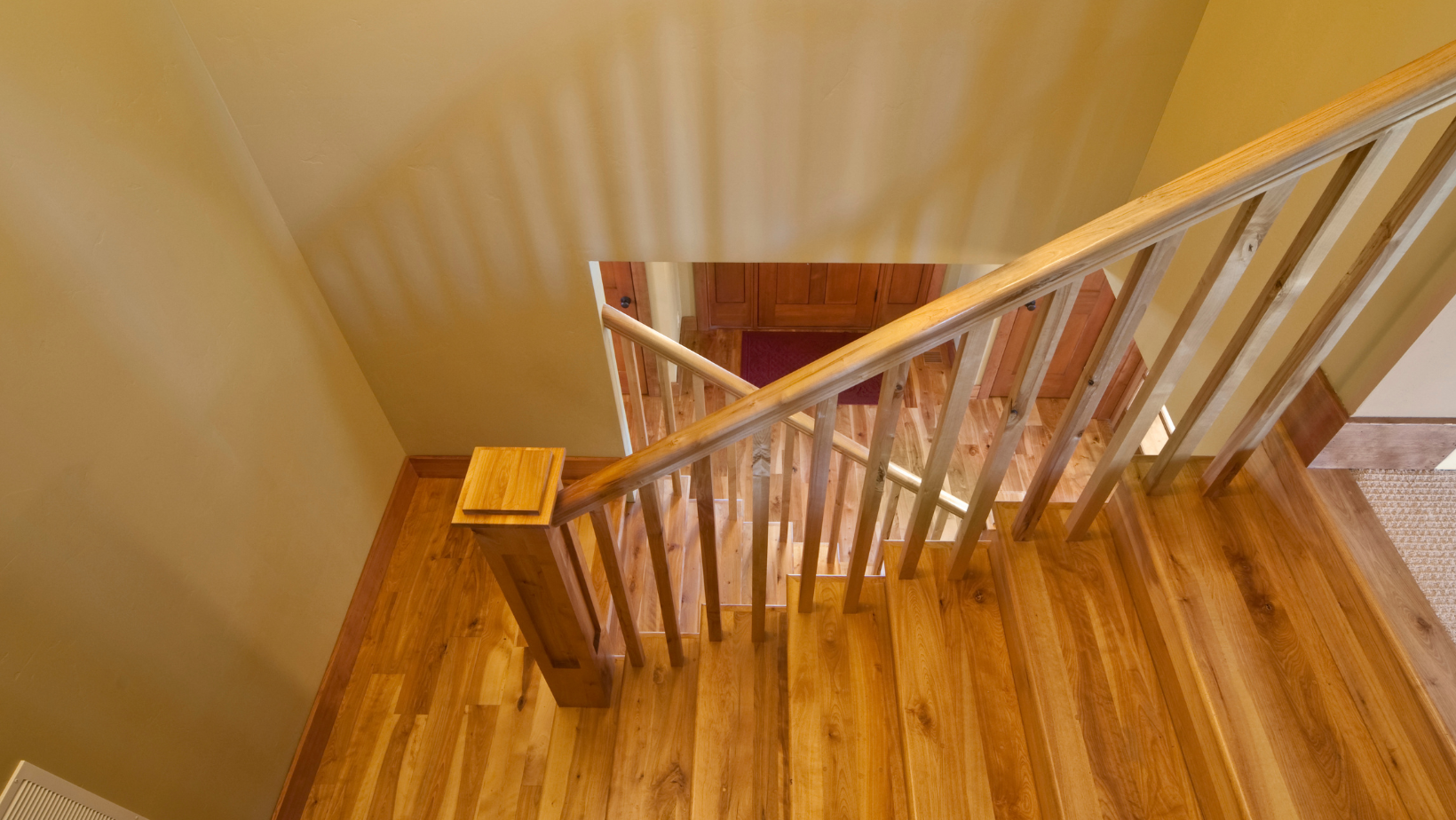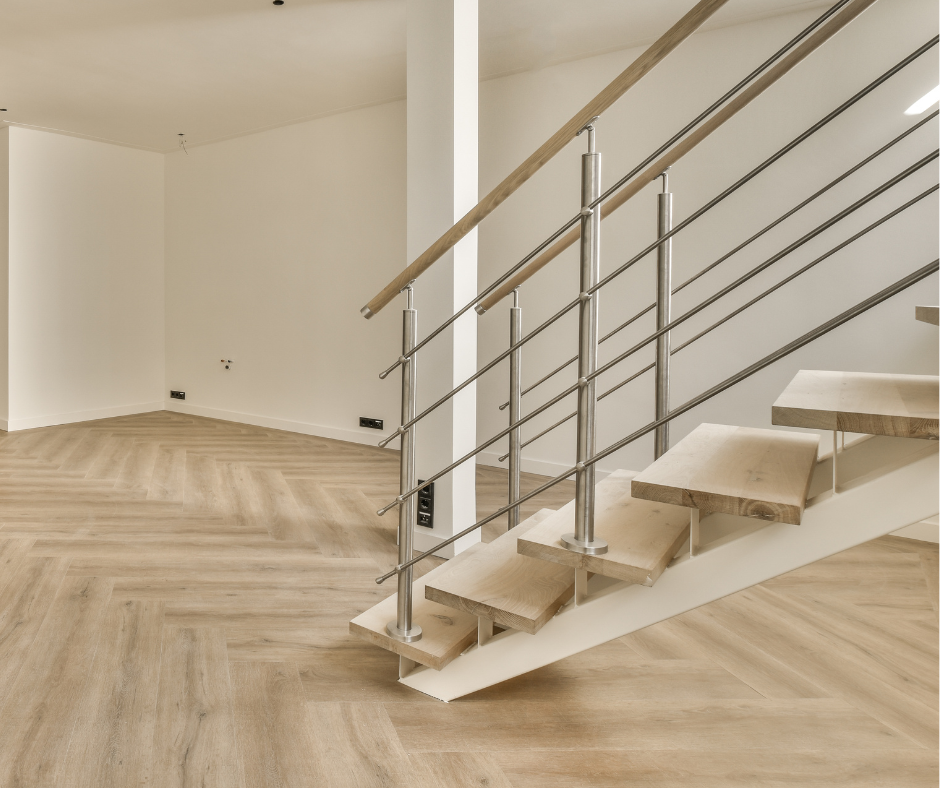If your staircase is visible from both sides, you’re likely missing the detail that makes it feel truly finished.
A double return stair tread features a finished edge on both ends, giving open stairs a clean, balanced, and professional look.
It’s the go-to solution for homeowners who want elegance and function without a full renovation.
In this guide, you’ll learn how double return stair tread options improve safety, add style, and increase long-term durability.
We’ll also show how pairing them with carpet stair treads creates a soft, slip-resistant surface ideal for busy homes.
From material selection to installation tips, everything you need to elevate your staircase is right here.
Why the Edges Matter in Stair Design
If you've ever looked at a staircase with exposed sides and felt something was missing, you’re picking up on the value of detail.
Exposed wood grain or unfinished sides can make an otherwise lovely stairway feel incomplete.
The answer? Tread returns — especially when both sides are visible.
Before we explore why double returns are a top-tier option, let’s quickly explain what is a tread return so everything is clear.
A tread return is the smooth, finished edge that caps the end of a stair tread.
It’s added where the side of the tread is visible — typically on open staircases or staircases without stringers that cover the edge.
Not only does this give a stair a more refined appearance, but it also prevents the edge from splintering or wearing down over time.
When Do You Need a Double Return Stair Tread?
In many homes, staircases are built against a wall on one or both sides.
In these cases, a single return — or no return at all — may be fine.
But for modern layouts with open-concept stairs or central staircases visible from both directions, a single finished edge won’t cut it.
A double return stair tread is designed with two finished ends — both left and right — making it ideal for floating staircases, center hall staircases, and any design where both sides of the tread are in plain view.
These treads ensure:
-
Symmetry from all angles
-
Professional-grade detail without the professional price tag
-
Added strength to corners, which often take the most abuse from shoes, paws, and life in general
Whether you’re upgrading for safety, comfort, or looks — or all three — double return treads make a clear difference.
The Function Behind the Form
Design details like double return treads aren’t just about appearances — though the aesthetic benefits are undeniable.
Their structure plays a crucial role in extending the life of your staircase.
Each return (or finished edge) adds a layer of protection to the vulnerable parts of the tread.
Especially in households with kids or pets, the corners of stairs are the first to show signs of wear.
Splintering, dents, and cracks can not only age your staircase but also create safety hazards.
With double return stair treads, those edges are sealed and strengthened, giving your stairs both beauty and backbone.
Why Oak Is The Gold Standard for Stair Treads
Let’s talk materials. Not all woods are created equal — especially when it comes to stairs.
An oak stair tread return offers one of the best combinations of beauty, durability, and value on the market.
Oak has long been the wood of choice for traditional and contemporary staircases alike.
Its tight grain, strength, and resistance to denting make it ideal for high-traffic areas like stairwells.
Here’s why homeowners trust oak:
-
Natural durability: It holds up against years of foot traffic.
-
Classic appeal: The grain looks stunning whether stained light, dark, or painted.
-
Easy to match: If you're pairing it with hardwood flooring or railing elements, oak is often a match.
-
Custom options: Oak treads can be made to suit your staircase shape, width, and depth — including single and double return needs.
And when you’re using a double return tread, oak provides that premium, finished edge on both sides, creating a consistent, high-end finish.
How Carpet Stair Treads Pair With Double Returns
Adding a double return stair tread sets the foundation for a stylish and solid staircase.
But if you want added comfort and slip resistance, consider installing carpet stair treads on top.
These small pieces of carpet are designed to fit neatly onto each individual stair, adding:
-
Grip: Prevent slips for pets and children.
-
Softness: Reduces noise and cushions your step.
-
Design: Comes in a variety of colors and patterns to match your home style.
At Oak Valley Designs, we offer DIY-friendly carpet treads that pair seamlessly with hardwood options like oak — and they work beautifully over double return treads.
Understanding Stair Overhang: Safety Meets Style
Stair treads often include an overhang — the lip that extends past the riser below.
This isn’t just a design quirk; it has a job to do.
-
Safety: It creates more surface area for the foot, helping prevent missteps.
-
Comfort: Feels more natural underfoot.
-
Appearance: Gives stairs that finished, traditional look.
In most homes, overhangs range from ¾ inch to 1¼ inches and are required by building codes in many areas.
If you’re updating your stairs with double return treads, it’s important to keep overhang dimensions in mind to ensure code compliance and visual harmony.
The 27 Rule: Making Sure Your Stairs Feel Right
Even the best-looking staircase can feel “off” if the proportions aren’t right.
That’s where the 27 Rule comes in.
The rule states that tread depth plus twice the riser height should equal 27 inches.
This formula helps ensure your stairs are comfortable and safe to use.
Example: Tread depth: 10 inches Riser height: 8.5 inches 10 + (2 × 8.5) = 27 inches
Why it matters:
-
Prevents steep stairs that are hard to climb.
-
Avoids shallow steps that feel awkward or unsafe.
-
Improves flow in multi-level homes.
When using double return treads, you’ll want to make sure the total depth — including the overhang — fits within this guideline for the best experience.
DIY Installation Tips for Double Return Stair Treads
You don’t need to be a contractor to upgrade your staircase.
In fact, part of the magic of Oak Valley Designs is how easy we make it to install high-end treads yourself.
Here are a few installation tips:
-
Prep your surface: Clean stairs and make sure they’re level.
-
Dry fit first: Place your double return treads in position before attaching to check fit.
-
Use adhesive, not nails: Our treads are designed to stay secure with non-damaging adhesives.
-
Work your way down: Install from top to bottom to avoid stepping on fresh adhesive.
-
Finish edges cleanly: Use trim or caulking if needed for a professional look.
With a little patience and the right materials, your stairs can be weekend-project-ready.
Common Misconceptions About Stair Tread Returns
“Only designers need this.”
Actually, homeowners who care about safety, style, or DIY upgrades benefit most from tread returns.
“It’s only for looks.”
While the polished look is a big win, tread returns also protect the wood and edges from damage.
“A single return is always enough.”
Not if both sides of your stairs are visible. That’s where a double return shines.
“Wood treads don’t work with carpet.”
With modern stair treads, combining hardwood and carpet has never been easier—or more stylish.
How to Choose the Right Double Return Tread for Your Home
Consider the following when choosing your double return stair tread:
-
Visibility: Are both ends of your stairs exposed?
-
Material: Oak is a reliable and beautiful option that blends well with most interiors.
-
Finish: Match your stair tread return to your floor, railing, or baseboard colors.
-
Traffic: If your stairs see a lot of action, choose hardwood and consider adding carpet treads for longevity.
No matter your home style—classic, modern, farmhouse, or somewhere in between—double return treads help elevate your space without a massive renovation.
Stepping It Up
Your staircase is one of the most-used spaces in your home.
It deserves the same level of attention as your kitchen or living room.
A double return stair tread provides not just beauty, but structure and safety in a DIY-friendly format.
And when it comes to craftsmanship, detail, and care—Oak Valley Designs is here to make it simple.
With options like our oak stair tread return, custom sizes, sample swatches, and easy returns, you don’t have to choose between luxury and practicality.
From family memories to everyday moments, we believe every step should feel just right.
-
Website: https://oakvalleydesigns.com/
-
Phone: 706.331.0315
-
Email: info@oakvalleydesigns.com
-
Address: 30 River Ct SW Bldg E Cartersville, Ga 30120




